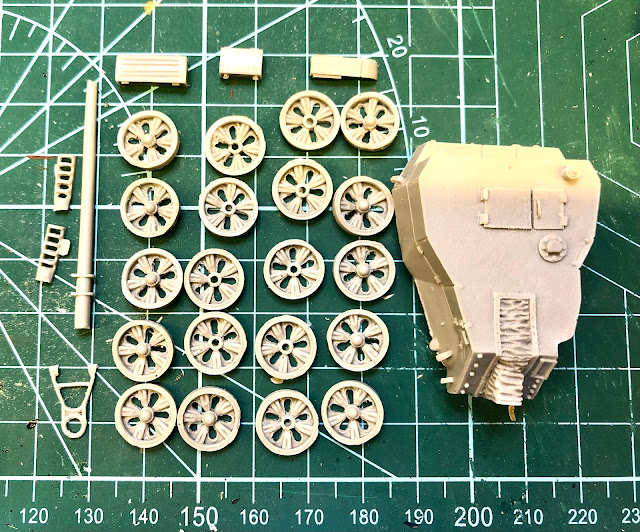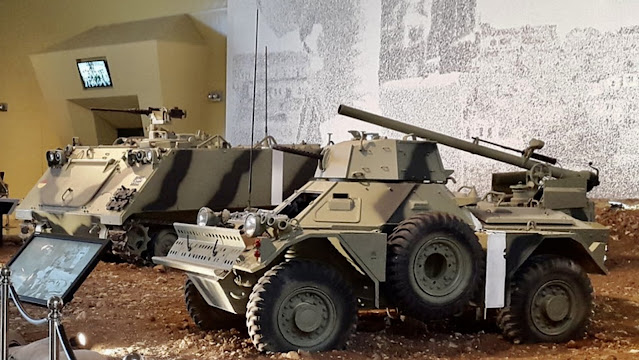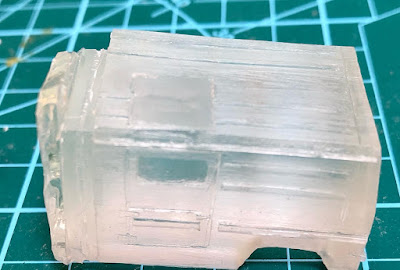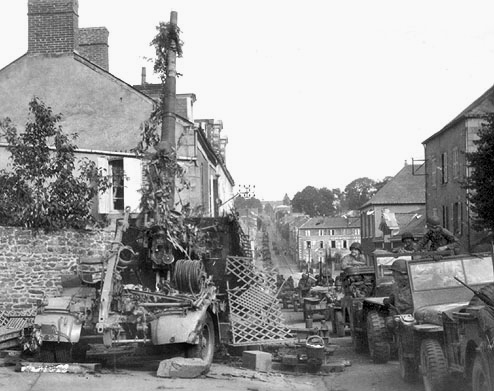Yom Kippur War Moroccan Army
Syrian T55 crewed by Moroccans dug in on the Golan, note the white identification cross on the turret and mixed uniforms of the moroccan troops.
Moroccan Army organisation
The Moroccan army was very different to its fellow Arab nations coming with western style professionally trained and officered by men who had attended the French Military schools and colleges, many of the senior Officers and Ncos had fought in the French army in the Congo, French Indochina, Algeria, and Western Sahara campaigns and then after independence constant border wars with Algeria and the conquest of Spanish Morocco.
The Moroccan army at this time followed the French “Javelot” divisional doctrine developed in the 50s. The infantry Brigade consisted of four or five regiments of Infantry with attached artillery and if motorised light armour, as required by the task. The infantry Regiment consisted of four to six companies with support elements with enough regimental HQ officers to form small or large subordinate combat sized/battalion teams as required. Each regiment consisted on paper of 812 officers and men and was commanded by a chef de battalion, the regimental support element had two sections of mortars, two sections of heavy machine guns and two sections of light recoilless rifles. Each combat team/battalion as assigned was commanded by a captain. Each platoon was commanded by a 1st lieutenant and sous lieutenant, it had two light 60mm mortars, two MMG teams, two manhandled anti tank weapon teams, and three rifle grenade teams, then typically broken into two fire and movement teams lead by Sergeants. Motorised and airborne regiments had an attached Armoured car or light tank regiment, a motorised anti tank and motorised recoilless rifle platoon plus vehicles to carry the motorised infantry this bought the strength up to 1271 officers and men. Administration and Supply elements were only attached at the brigade level.
The French Javelot structure was developed originally for nuclear war in Europe but proved its value in the 56 suez crisis, shocking the English with it combat teams approach. It was further developed by the French fighting experience in Indochina, Congo and Algeria and served its purpose for the frontier type fighting of the Moroccan army, during the 60s and 70s.
Uniforms and equipment
The infantry deployed for the war were equipped with French uniforms, rank structure and unit structure. The uniform was either medium green or lizard camouflage, the French M51 (American m1) helmet, and French 1950s TAP infantry webbing equipment.
Personal weapons were very mixed and included the MAS-36 (MAS-36 LG48 and MAS-36/51) and the rifle-grenade capable variants, the MAS-49/56 (airborne & infantry) , FN FAL rifles, AK-47 and the MAT-49 sub machine gun (Officers and Ncos). Squad automatic weapons included the French AA-52 NF1, MAC 24/29 and the FN Mag-58 were also in service. Heavy machine guns include the American browning 30 cal and the M50 50 caliber HMG. Mortars were Brandt 60mm and the Brandt 27/31 81mm mortar.
 |
| Troops arriving in Syria |
Moroccan Armour and vehicles
The armour available to the Moroccan army in 1973 was 40 Russian T-54B D10 TG 100mm and 80 Czechoslovakian T-54B built models with the latest 100mm D10T2S stabilised gun, included in the Czech order included ten T-54AR and Ten T54 AK command tanks. American equipment was on order and started to arrive in early October 1973, the first delivery of twenty six M48a3 MBTs formed the first tank regiment vehicles by March 1974. A lot of light tanks made up the remainder one hundred and twenty French AMX 13 light tanks (4 AMX CD recovery)m and some Sherman’s were still in reserve.
 |
| Moroccan operated T55s |
For the anti tank support role was twenty five Czech built SU-100 SP guns, fifty American M56 scorpion 90mm Self propelled Anti tank guns, (I have not found any record of them being deployed in Syria). Armoured cars were predominantly French, thirty six panhard EBR 75 and one hundred and ninety Panhard AML 90, thirty AML60-7, forty M8 Armoured cars. Armoured personnel carriers consisted of ninety five Czech OT 64 and forty American M5 and M3 halftracks (ex French stock) and fifty Panard M3 VTT APCs.
Soft skins in the majority was ex American ww2 stocks. The jeeps were hotchkiss M201(French made - American ww2 Jeep), American mutt jeeps, series II and series III Land Rover Santana (Spanish built) and even some J40 Toyota landcruisers, along with mini Mokes armed with recoiless M20 75mm!
 |
Moroccan paratrooper mini moke with recoilless rifle and 30 cal.
|
Trucks included the Romanian Bucegi SR11 3t, Berliet GBD (6x6), American general M813a1 (6x6) and French ACMAT TPK 425 (4x4) and the TPK 640 (6x6) trucks and I have seen some Simca Marmon also in a parade but nothing in export documents. Mack F900 heavy transport trucks for tank transport.
Anti armour consisted of the hand held M20 super bazooka and the RPG-7, the recoilless rifles M20 75mm and the M40a1 106mm, towed D44 85mm AT gun and the five hundred MGM 32A Entac missiles.
Artillery
Towed systems included twenty American M2A1 (now a M101A1) Thirty eight HM-2 105mm howitzers ( model 1924), eighteen soviet M-46 122mm, and twenty M114 155mm howitzers. Self propelled systems included ninety eight Amx53 155mm sp howitzer, thirty self propelled AMX mk61 105mm howitzer, twenty self propelled M44 155mm howitzer. Thirty six BM-21 122mm rocket launchers
Anti aircraft equipment
Information for this part is taken from export lists, but also includes captured equipment. I have more research to do here, but I have types as follows. Towed systems ninety ZPU-2 14.5mm, nineteen ZPU-4 14.5mm, ninety Zu 23-2 W23mm, thirty 50 cal M45 Qaud, sixty AZP S60 57mm, and the missile systems SA-7 Grail, French Hawksystem (cannot locate source for this but have a image of one deployed for the Algerian war in 73) and I am not sure if the MIM-72 Chaparral launchers were available in time for the war.
Deployment
The exact number of soldiers sent by the kingdom to the war remains unknown this day, with two different primary sources conflicting in numbers 5000 and 11000 being noted. Although there was two fronts the second brigade not deploying completely in Egypt time for the ceasefire which may account for the two primary reference confusion to the number of men deployed.
Moroccan Expedition for the Defense of the Arab Homeland (EMDPA)
Expedition Syria Brigade structure
Commander Major General Abdel Salam Sefroui
Moroccan Expeditionary Force commander for Syria was Major General Abdel Salam Sefroui, he had a long career and held several positions, including governor of the cities of Agadir, Jeddah, and Al-Bayda, commander of the Light Security Brigade, then director of the Military Academy, then commander of the Royal Guard, ending his career in the diplomatic corps as the Kingdom’s ambassador to the Netherlands. He was the closest general during the reign of Hassan II, where he defended the king in the Skhirat coup until he was injured. He was wounded by a bullet in his knee, as he was wounded 8 times in the Indochina War.
Chief of staff Lt -Colonel Mohammed Bernichi
Armoured Regiment, Colonel Naji El Mekki
30 x T55 supplied by Syria (images seem to be green and camo with white cross air recognition on the turret)
10 AMX-13 tanks ( again mixed Moroccan sources not sure if Syrian front , 4 were destroyed, the remainder were shipped back?)
9 AML90 Armoured cars again this is from a Moroccan source, but does not mention which front, but Syria is likely but not confirmed. .
Unknown numbers of OT64 if it two supporting regiments of infantry at least 48 if following French doctrine. They are mentioned in Israeli sources in the fighting of the Golan heights villages and strongpoints and are in photos.
Infantry Brigade 2500 men
Again mixed sources, most sources only mention one regiment on the line, another two regiments, one source mentions that they were reorganised along soviet structure to match the Syrians which could explain the confusion. Syrian and Moroccan bravery commendations were issued to the three regimental commanders for the war, and one regimental commander was killed during the fighting (and the chief of staff replacing him possibly).
2nd infantry regiment lt Colonel Mohamed Belhaj motorised
Born August 24, 1936 in Fez, came from Saint Cyr Military School, “Mohamed V” promotion. Appointed second lieutenant on August 1, 1957, was assigned to the infantry, Lieutenant: August 1, 1959, Captain: August 1, 1963, Commander: March 3, 1967, Lt-Colonel: March 3, 1971, Colonel: March 3, 1976, Colonel Major: March 3, 1989, Brigadier General: July 12, 1994, Major General: July 30, 2001
Decoration and Citations National: Officer of the Order of the Throne: May 14, 1965, Commander of the Order of the Throne: March 3, 1992, Military Merit, Knight rank: April 27, 1976, Citation to the order of the army with war star (crown) April 27, 1976, Volunteer medal (Syria), Moroccan commemorative (Expedition to Syria).
Foreign decorations: Ouissam Al Harbi: 1st category (Syria): November 16, 1973. Ouissam Achajaâ (Syria), Commemorative (Syria), Commander of the French National Order of Merit (1995), National Order (Tunisia): commander rank, National Order (Iran): officer rank.
Service records: Assigned to the 3rd Infantry Battalion in Taza (August 1, 1957), commanded the 14th company in Aknoul. Then the 12th company to: Saka, Benslimane, Skhirat, Khanfouf (Ifni enclave) and Meknes. Transferred to the ARM (at his request) on September 26, assumes the functions of section head of officer cadets and instructor of Arabic, translation, history and geography of Morocco. Transferred to the BQG (June 16, 1964), served as chief of staff to the General, Major General of the FAR from July 15, 1964 to September 1, 1968. Designated to take command of the Royal Military School (Ribat Al Kheir ) from September 1, 1971 to August 30, 1972. Assume the functions of the delegated Arms Commander of the place of Kenitra from September 1, 1972 (1st Company of Kenitra HQ). Part of the EMDPA in Syria, designated by His Majesty the King to command the 2nd Front Infantry Regiment (April 5, 1973, July 15, 1974).
The regiment is mentioned in the fighting on Mont Hebron, had attached thirty Syrian T55 tanks crewed by Morrocans taking part in the first day one of the invasion.
3rd infantry Regiment Abdelkader Al-Alem motorised
He studied at Ibn Taoumarte college in Sidi Kacem then at Moulay Youssef high school in Rabat . In 1945, he joined the military academy in Meknes where he spent 4 years. In 1950 , he received training for a year in Bordeaux , France . In 1953 on the return of King Mohammed V from exile, he was present among those welcoming him. In 1963 he was promoted to the rank of colonel by Hassan II and decorated. In 1971 , he was injured during the failed coup d' état in Skhirat. In 1973 he leads the 3rd regiment and is killed in the fighting. He was buried in the Damascus cemetery and later returned to Morocco.
Parachute Commando
Mentioned attached commando to Syrian units on Mount Hermon, not sure how large this combat unit was, it could of been a section or larger.
Anti tank elements
Motorised Anti tank assets are mentioned attached to the brigade jeeps with recoiless rifles, only photos with no numbers but a section was two vehicles, with three sections to a platoon attached to a brigade. Towed anti tank, no reference of towed antitank being deployed
 Artillery battalion
Artillery battalion
I cannot find a list of towed or self propelled weapons deployed in the war, however self propelled guns are mentioned supporting the assaults and then defence of the position on the Golan. I also expect the 120mm mortars are along with 81mm mortars within the infantry division.
 |
| Captured Israeli Defa 921 90mm AT gun, looks like a 57mm carriage. |
Moroccan Air Force
I cannot confirm completely that the air force fought in any combat sorties, however reports of fourteen Mig 17 and twelve Moroccan Air Force Northrop F-5A joined the Egyptian 69 Squadron at Tanta on 19 October 1973. Flying missions over the Nile delta after the ceasefire. .
Fighting in the Golan heights
The first Moroccan troops arrived by aircraft and then following equipment and men arrived via ship in the July of 1973, training along side the Syrians, the relationship was tense, with the promised armour for the whole regiment only amounting to 30 T55 tanks, rather than 45 (30 does match the Syrian Soviet Doctrine though).
The brigade is attached to the Syrian 7th Infantry Division. Assigned to the eastern side of the assault on Mont Hermon. The brigade advanced on the 6th of October with the objectives of Hellas-Ovana-Al Qalaa and had one of the first contacts in the vicinity of Tel Sharta fighting against the Israeli 74th Saar tank battalion (7th Armoured div). The Israeli Sho’t Kal outgunned the T55s, however the Moroccans reached their objectives around 1600 southwest of Sahita point and the outskirts of Rouissat-Abi-Ramid. One company surrounding Israelis in the police station at Sahita support point, two other companies occupied two blocks around it, the rest of the forces occupy points around Rouissat. They halted awaiting further instructions, where they were ordered to hold position. On the 7th to the 9th the Moroccans held their position while the 121st Syrian division passed through to continue the assault, where they were badly mauled by the Israelis.
At 8:40 on October 10, enemy aircraft bombed the positions of the Moroccan forces, focusing their bombing on the Al-Kasha site, height 1480, and Dahrat Al-Hadab. At 11:15, an enemy armored convoy, numbering a tank battalion, advanced from the direction of Masada-Sahita, and Moroccan artillery opened fire on it. At 11:40, a tank company and a mechanized infantry company deployed in front of Sahita and began opening fire on the Moroccan forces, which responded to the fire in kind and stopped the enemy forces on this line. Close to 1:10 p.m., the enemy pushed a group of its tanks to the outskirts of Jubata al-Khashab, threatening the left side of the Moroccan forces. The Moroccan 3rd infantry regiment units, stationed at Heights 1480, Dahrat al-Hadab and the Marj al-Jamous area, were subjected to severe air and artillery bombardment. The Moroccan forces clashed with the enemy infantry forces, then withdrew to the Beit Jinn farm.
On October 11, the unit faced the Israeli 77th Tank Battalion. Here again, the fighting is fierce. The withdrawal commences east and they find their flank open to counterattack (the Syrian unit had fled). On October 20, it was attached to the 9th Syrian Infantry Division. Device which is organized to launch a counterattack in the Sassa salient. Scheduled for October 25, the operation should make it possible to regain the initiative against the Israelis who are now threatening Damascus, after having restored a situation that was nevertheless desperate on October 6. However, Hafez el-Assad fully realizes that the military situation has become catastrophic. As a result of which he accepted a ceasefire which took effect on October 23, 1973, at midnight... The counter-offensive therefore did not take place and there the fighting of the Moroccan motorized infantry brigade stopped. Despite very tough confrontations, it retained its cohesion throughout the war. In all, 5,500 men were sent to the Golan and Egypt.The Betrayal of Moroccan troops
During the withdrawal on the 10th-11th one of the more interesting accounts during the war was the betrayal of Moroccan troops by a Syrian commander. The positions of the Moroccan troops was betrayed to the Israeli troops opposite, according to one source, Mohammed Loma, “Moroccan soldiers were tricked by the Syrian brigade headed by Halawa, a druze commander, who collaborated with the Israelis”. The Syrian army was able to deal with the situation, and executed on the following day commander Major Raik Halawa, who was considered a traitor. The Moroccan martyrs were also mentioned by Sasa Post.
Expedition Brigade Egypt Colonel Major Hassan Al-Hatmee 5500 men
A second brigade was assembled to assist on the Egyptian front but arrived to late to participate in the fighting. When they arrived they were positioned around the town of Suez, and built defensive positions along the Bir Azeib, a strategic location defending access to the two roads leading to Cairo.
Moroccan troops finally returned from Egypt and Syria in April 1974. 170 Morrocan died during the war and 6 were captured.
References
WebsitesMoroccan army history forum
YouTube
Books After The Storm: The Changing Military Balance in the Middle EastBy Anthony H. Cordesman
Foss, Christopher F. (1974) [1972]. Jane's Pocket Book of Tanks and Armored Fighting Vehicles. Collier Books.
Osprey Arab armies Yom Kippur war
MIG productions Arab Armies volume 3
Estes, Kenneth W (2016). M50 Ontos and M56 Scorpion 1956–70: US Tank Destroyers of the Vietnam War
Details on the betrayal by the Syrian commander



















































